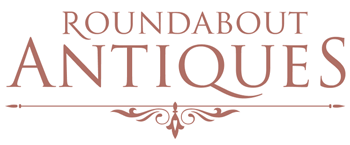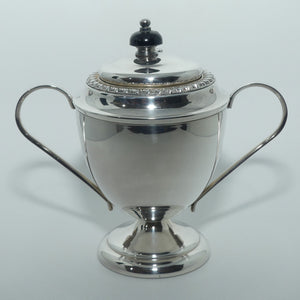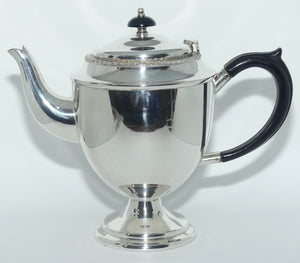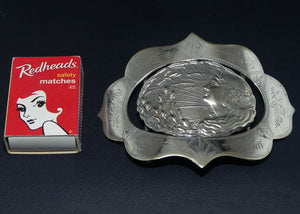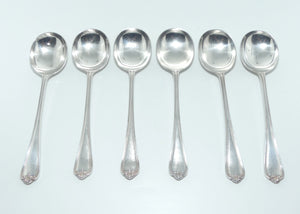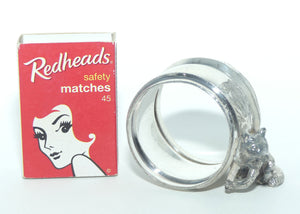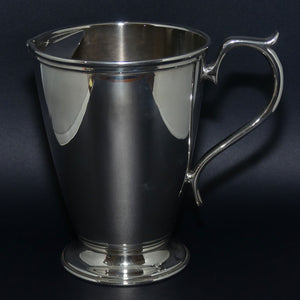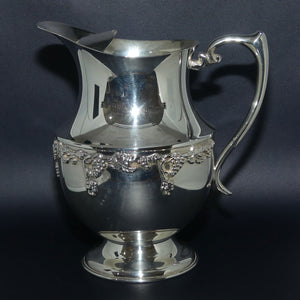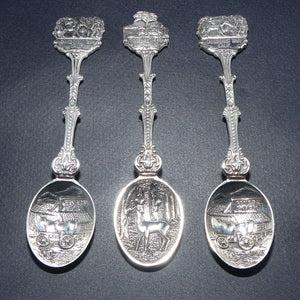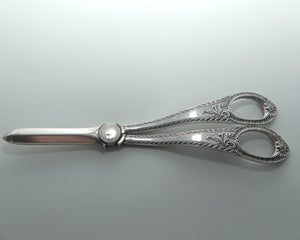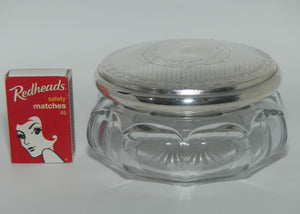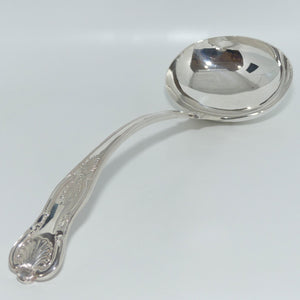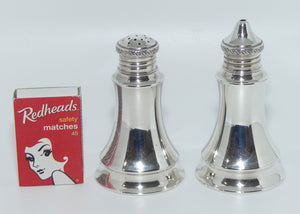{"id":7986313396452,"title":"Pair of Old Sheffield Plate telescopic candlesticks","handle":"pair-of-old-sheffield-plate-telescopic-candlesticks","description":"Pair of Old Sheffield Plate telescopic candlesticks\u003cbr\u003e\u003cbr\u003eA rarely seen, and truly wonderful feature of these genuinely old items - is that the candlesticks extend from 20cms (8\") tall when down to some 26.5cms (10 1\/4\") extended up\u003cbr\u003e\u003cbr\u003ec.1890\u003cbr\u003e\u003cbr\u003eThere is no markings to these pieces, however you can ascertain they are Sheffield as there is evidence of the copper showing through on the base of the sticks\u003cbr\u003e\u003cbr\u003eIn good condition\u003cbr\u003eSome plating wear commensurate with the age of the pieces which have great age about them\u003cbr\u003eComplete with candle holder cups\u003cbr\u003e\u003cbr\u003e\u003cbr data-mce-fragment=\"1\"\u003e\u003cspan data-mce-fragment=\"1\"\u003e\u003c\/span\u003e\u003cstrong data-mce-fragment=\"1\"\u003eWhat is Sheffield Plate?\u003c\/strong\u003e\u003cbr data-mce-fragment=\"1\"\u003e\u003cspan data-mce-fragment=\"1\"\u003eSheffield plate, in metalwork, is generally an item made of copper coated with silver by fusion. The technique was discovered about 1742 by Thomas Boulsover, a Sheffield cutler, who noted that the combination of fused silver and copper retained all the ductility possessed by both metals and acted as one in response to manipulation.\u003c\/span\u003e\u003cbr data-mce-fragment=\"1\"\u003e\u003cbr data-mce-fragment=\"1\"\u003e\u003cspan data-mce-fragment=\"1\"\u003eSheffield plate was produced as follows. An ingot of copper, slightly alloyed with zinc and lead, was covered on both top and bottom with a sheet of silver and fired. When the silver began to melt, the ingot was removed from the furnace, cooled, and rolled. The edges of pieces made were rolled over to hide the copper that was visible when the sheet was cut. At first Boulsover produced only buttons, but his former apprentice, Joseph Hancock, later applied the process to other articles.\u003c\/span\u003e\u003cbr data-mce-fragment=\"1\"\u003e\u003cbr data-mce-fragment=\"1\"\u003e\u003cspan data-mce-fragment=\"1\"\u003eThe production of fused plate was not restricted to Sheffield alone. In 1762 Matthew Boulton began producing Sheffield plate at Soho, Birmingham, and various workshops in London, Nottingham, and Dublin. Factories in several European countries and North America also made pieces by Boulsover’s method. After 1830 “German silver,” nickel alloyed with copper and zinc, often replaced copper as the base metal. With the introduction of plating by electrolysis in the 1840s, the production of Sheffield plate declined and by the 1870s had all but ceased.\u003c\/span\u003e\u003cbr\u003e","published_at":"2023-06-10T06:00:01+10:00","created_at":"2023-06-05T12:35:00+10:00","vendor":"Sheffield Plate","type":"Pair of Candlesticks","tags":["Antique","plated"],"price":14000,"price_min":14000,"price_max":14000,"available":true,"price_varies":false,"compare_at_price":null,"compare_at_price_min":0,"compare_at_price_max":0,"compare_at_price_varies":false,"variants":[{"id":43964170043620,"title":"Default Title","option1":"Default Title","option2":null,"option3":null,"sku":"","requires_shipping":true,"taxable":true,"featured_image":null,"available":true,"name":"Pair of Old Sheffield Plate telescopic candlesticks","public_title":null,"options":["Default Title"],"price":14000,"weight":2000,"compare_at_price":null,"inventory_management":"shopify","barcode":"","requires_selling_plan":false,"selling_plan_allocations":[]}],"images":["\/\/www.roundaboutantiques.com.au\/cdn\/shop\/files\/telescopic_1a.jpg?v=1685932502","\/\/www.roundaboutantiques.com.au\/cdn\/shop\/files\/telescopic_1b.jpg?v=1685932502","\/\/www.roundaboutantiques.com.au\/cdn\/shop\/files\/telescopic_1c.jpg?v=1685932503","\/\/www.roundaboutantiques.com.au\/cdn\/shop\/files\/telescopic_1d.jpg?v=1685932503","\/\/www.roundaboutantiques.com.au\/cdn\/shop\/files\/telescopic_1e.jpg?v=1685932503","\/\/www.roundaboutantiques.com.au\/cdn\/shop\/files\/telescopic_1f.jpg?v=1685932565"],"featured_image":"\/\/www.roundaboutantiques.com.au\/cdn\/shop\/files\/telescopic_1a.jpg?v=1685932502","options":["Title"],"media":[{"alt":"Pair of Old Sheffield Plate telescopic candlesticks","id":45835717148900,"position":1,"preview_image":{"aspect_ratio":1.0,"height":1250,"width":1250,"src":"\/\/www.roundaboutantiques.com.au\/cdn\/shop\/files\/telescopic_1a.jpg?v=1685932502"},"aspect_ratio":1.0,"height":1250,"media_type":"image","src":"\/\/www.roundaboutantiques.com.au\/cdn\/shop\/files\/telescopic_1a.jpg?v=1685932502","width":1250},{"alt":"Pair of Old Sheffield Plate telescopic candlesticks","id":45835717181668,"position":2,"preview_image":{"aspect_ratio":1.0,"height":1250,"width":1250,"src":"\/\/www.roundaboutantiques.com.au\/cdn\/shop\/files\/telescopic_1b.jpg?v=1685932502"},"aspect_ratio":1.0,"height":1250,"media_type":"image","src":"\/\/www.roundaboutantiques.com.au\/cdn\/shop\/files\/telescopic_1b.jpg?v=1685932502","width":1250},{"alt":"Pair of Old Sheffield Plate telescopic candlesticks","id":45835717214436,"position":3,"preview_image":{"aspect_ratio":1.0,"height":1250,"width":1250,"src":"\/\/www.roundaboutantiques.com.au\/cdn\/shop\/files\/telescopic_1c.jpg?v=1685932503"},"aspect_ratio":1.0,"height":1250,"media_type":"image","src":"\/\/www.roundaboutantiques.com.au\/cdn\/shop\/files\/telescopic_1c.jpg?v=1685932503","width":1250},{"alt":"Pair of Old Sheffield Plate telescopic candlesticks","id":45835717247204,"position":4,"preview_image":{"aspect_ratio":1.0,"height":1250,"width":1250,"src":"\/\/www.roundaboutantiques.com.au\/cdn\/shop\/files\/telescopic_1d.jpg?v=1685932503"},"aspect_ratio":1.0,"height":1250,"media_type":"image","src":"\/\/www.roundaboutantiques.com.au\/cdn\/shop\/files\/telescopic_1d.jpg?v=1685932503","width":1250},{"alt":"Pair of Old Sheffield Plate telescopic candlesticks","id":45835717279972,"position":5,"preview_image":{"aspect_ratio":1.0,"height":1250,"width":1250,"src":"\/\/www.roundaboutantiques.com.au\/cdn\/shop\/files\/telescopic_1e.jpg?v=1685932503"},"aspect_ratio":1.0,"height":1250,"media_type":"image","src":"\/\/www.roundaboutantiques.com.au\/cdn\/shop\/files\/telescopic_1e.jpg?v=1685932503","width":1250},{"alt":"Pair of Old Sheffield Plate telescopic candlesticks","id":45835718000868,"position":6,"preview_image":{"aspect_ratio":1.0,"height":1250,"width":1250,"src":"\/\/www.roundaboutantiques.com.au\/cdn\/shop\/files\/telescopic_1f.jpg?v=1685932565"},"aspect_ratio":1.0,"height":1250,"media_type":"image","src":"\/\/www.roundaboutantiques.com.au\/cdn\/shop\/files\/telescopic_1f.jpg?v=1685932565","width":1250}],"requires_selling_plan":false,"selling_plan_groups":[],"content":"Pair of Old Sheffield Plate telescopic candlesticks\u003cbr\u003e\u003cbr\u003eA rarely seen, and truly wonderful feature of these genuinely old items - is that the candlesticks extend from 20cms (8\") tall when down to some 26.5cms (10 1\/4\") extended up\u003cbr\u003e\u003cbr\u003ec.1890\u003cbr\u003e\u003cbr\u003eThere is no markings to these pieces, however you can ascertain they are Sheffield as there is evidence of the copper showing through on the base of the sticks\u003cbr\u003e\u003cbr\u003eIn good condition\u003cbr\u003eSome plating wear commensurate with the age of the pieces which have great age about them\u003cbr\u003eComplete with candle holder cups\u003cbr\u003e\u003cbr\u003e\u003cbr data-mce-fragment=\"1\"\u003e\u003cspan data-mce-fragment=\"1\"\u003e\u003c\/span\u003e\u003cstrong data-mce-fragment=\"1\"\u003eWhat is Sheffield Plate?\u003c\/strong\u003e\u003cbr data-mce-fragment=\"1\"\u003e\u003cspan data-mce-fragment=\"1\"\u003eSheffield plate, in metalwork, is generally an item made of copper coated with silver by fusion. The technique was discovered about 1742 by Thomas Boulsover, a Sheffield cutler, who noted that the combination of fused silver and copper retained all the ductility possessed by both metals and acted as one in response to manipulation.\u003c\/span\u003e\u003cbr data-mce-fragment=\"1\"\u003e\u003cbr data-mce-fragment=\"1\"\u003e\u003cspan data-mce-fragment=\"1\"\u003eSheffield plate was produced as follows. An ingot of copper, slightly alloyed with zinc and lead, was covered on both top and bottom with a sheet of silver and fired. When the silver began to melt, the ingot was removed from the furnace, cooled, and rolled. The edges of pieces made were rolled over to hide the copper that was visible when the sheet was cut. At first Boulsover produced only buttons, but his former apprentice, Joseph Hancock, later applied the process to other articles.\u003c\/span\u003e\u003cbr data-mce-fragment=\"1\"\u003e\u003cbr data-mce-fragment=\"1\"\u003e\u003cspan data-mce-fragment=\"1\"\u003eThe production of fused plate was not restricted to Sheffield alone. In 1762 Matthew Boulton began producing Sheffield plate at Soho, Birmingham, and various workshops in London, Nottingham, and Dublin. Factories in several European countries and North America also made pieces by Boulsover’s method. After 1830 “German silver,” nickel alloyed with copper and zinc, often replaced copper as the base metal. With the introduction of plating by electrolysis in the 1840s, the production of Sheffield plate declined and by the 1870s had all but ceased.\u003c\/span\u003e\u003cbr\u003e"}
